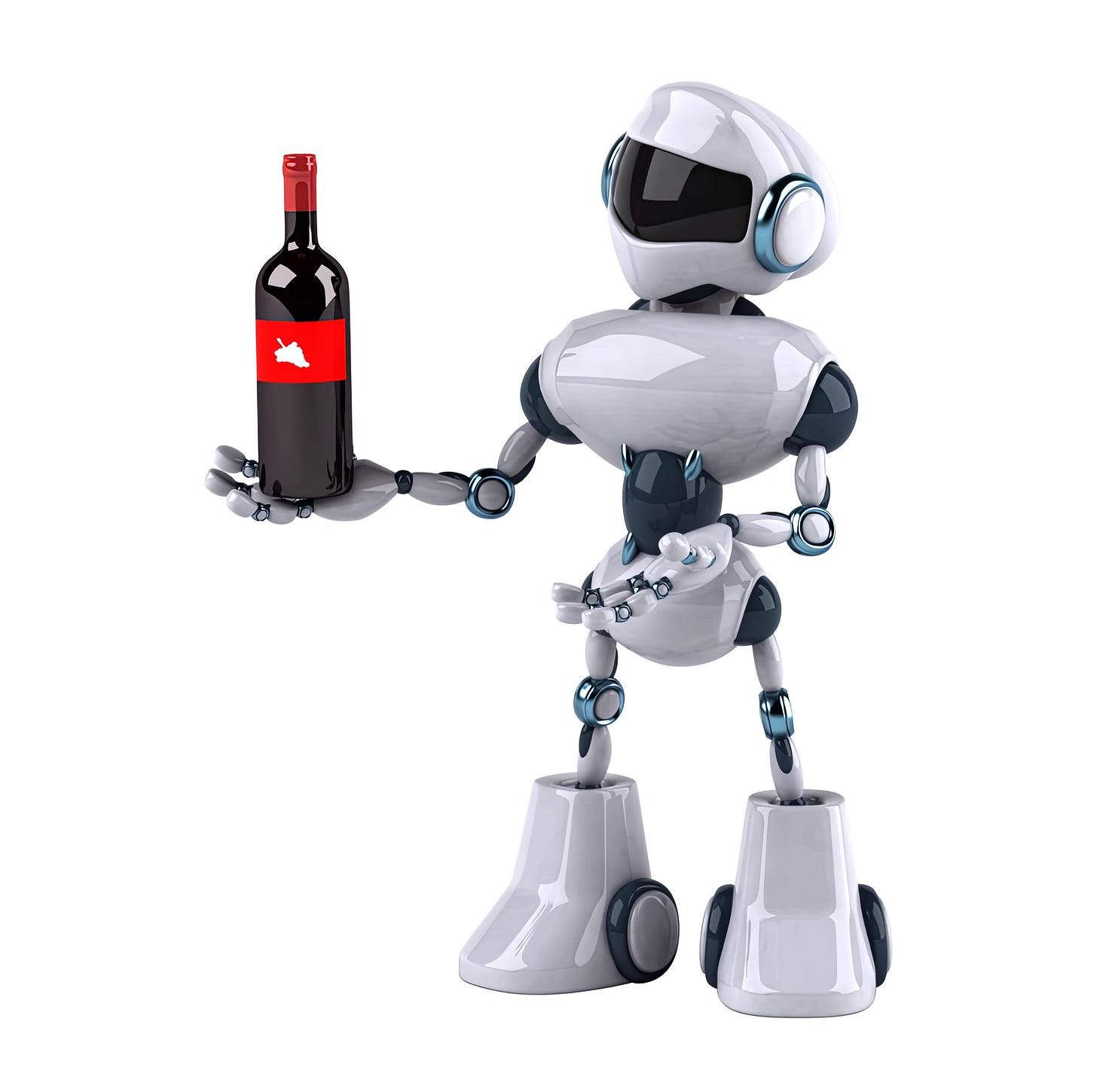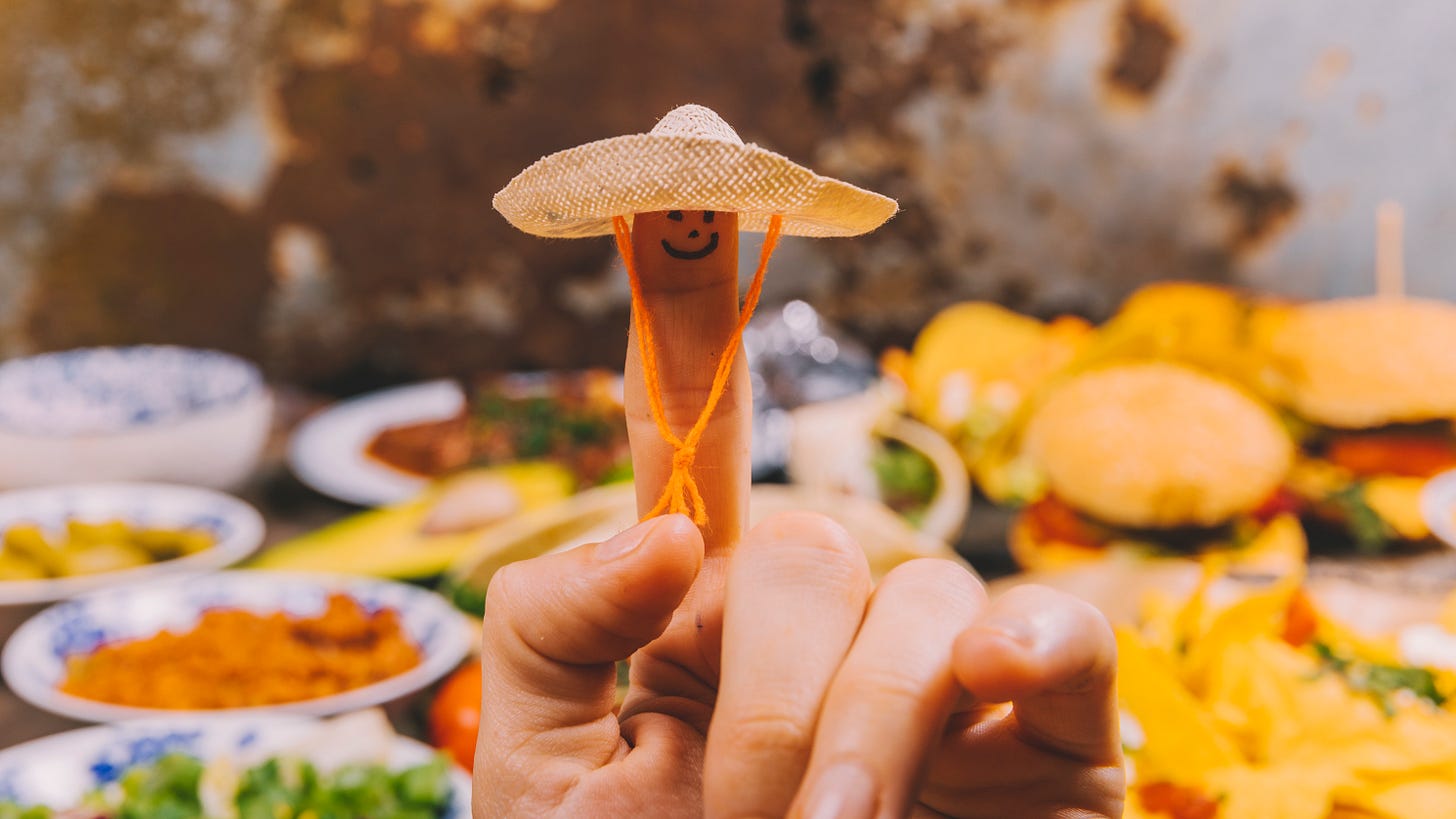
by lspeed | Oct 17, 2025 | RESTAURANT BUSINESS: BEHIND THE KITCHEN DOOR
In the world where we at Churrasco Phuket live and operate, the line between efficiency and experience is getting ever thinner. Operational pressure increased, staff shortages and cost control need to master rising guest expectations. Operators like us are increasingly tempted to turn to automation to keep things running smoothly. While we recognise that tech can solve certain problems, we also think that it chips away at what our guests come for in the first place: Personalised Hospitality.
Digital Fatigue Creep
Online ordering has become a default feature in many “modern” restaurants. It can make sense in terms of speed, accuracy, and scalability. But in an upscale restaurant or steakhouse, the value proposition shifts. Here, the guest isn’t looking for efficiency above all else. They want to be welcomed. They want attention to detail. They want interaction.
A significant portion of steakhouse clientele, particularly older, higher-spending guests, doesn’t want to order a $100 Wagyu Ribeye by tapping through a screen. For them, a digital interface is not convenience, but it feels out of place in a setting that prides itself on warmth, knowledge, and service with nuance.
This demographic isn’t just a legacy audience. They’re regulars, celebrators, wine buyers, the kind of guests who return because they trust that their experience will be personal and unhurried. And they’re the ones most likely to notice when a restaurant starts outsourcing the guest relationship to software.
Where Automation Doesn’t Belong
Tech can play a vital supporting role. A modern POS system that routes orders directly to the kitchen or bar speeds up prep time and reduces misfires. Integrated payments smooth out the checkout process. Inventory tools help rein in waste. These things matter, and they do add value where they belog – behind the scenes.
Front-of-house automation though needs to be handled carefully. Online booking tools are fine, as long as they’re complemented by a real person answering the phone when someone calls. Digital menus may be acceptable for lunch service, but they’re jarring at dinner when white tablecloths and sommelier service are part of the experience. If your guests are paying for excellence, don’t hand them an interface. Give them a beautiful menu and a welcome conversation.
The Risk of Over-Correcting
It’s tempting to assume that restaurants needs to go fully digital to keep up with the “other guys”. But upmarket dining isn’t like fast casual. The customer expectation is almost the opposite. That doesn’t mean you shouldn’t monitor and evolve where practical and useful. Evolution needs to be intentional, so automate the repetitive and invisible. Don’t automate the emotional core of your business.
A seasoned server who remembers how a guest takes their steak is more valuable than any scheduling app. A handwritten thank-you note has more impact than an automated follow-up email. And when a regular calls to book a table for six on Friday, don’t redirect them to the website. Take the call. Know their name. Ask if it’s the usual table. It’s not that complicated … we do it lal the time.
Serve the Brand, Don’t Define It
High-end restaurants don’t sell food. They sell trust, occasion, and atmosphere. They make people happy. Everything that supports that, from plating to payroll, should enhance it, not compete with it.
Automation is part of that scenario. But it’s a back-of-house asset, not a front-of-house identity. Use it to reduce friction behind the curtain, not to cut corners in the spotlight. Upmarket guests aren’t looking for speed, they’re looking to feel seen.
Automation can’t do that — but your team can.
Image Credit: https://freepik.com
_ _ _
© CHURRASCO PHUKET STEAKHOUSE / ALL RIGHTS RESERVED
Reprinting, reposting & sharing allowed, in exchange for a backlink and credits
Churrasco Phuket Steakhouse serves affordable Wagyu and Black Angus steaks and burgers. We are open daily from 12noon to 11pm at Jungceylon Shopping Center in Patong / Phuket.
We are family-friendly and offer free parking and Wi-Fi for guests. See our menus, reserve your table, find our location, and check all guest reviews here:
https://ChurrascoPhuket.com/
#Churrascophuket #jungceylon #phuketsteakhouse #affordablewagyu #wagyu
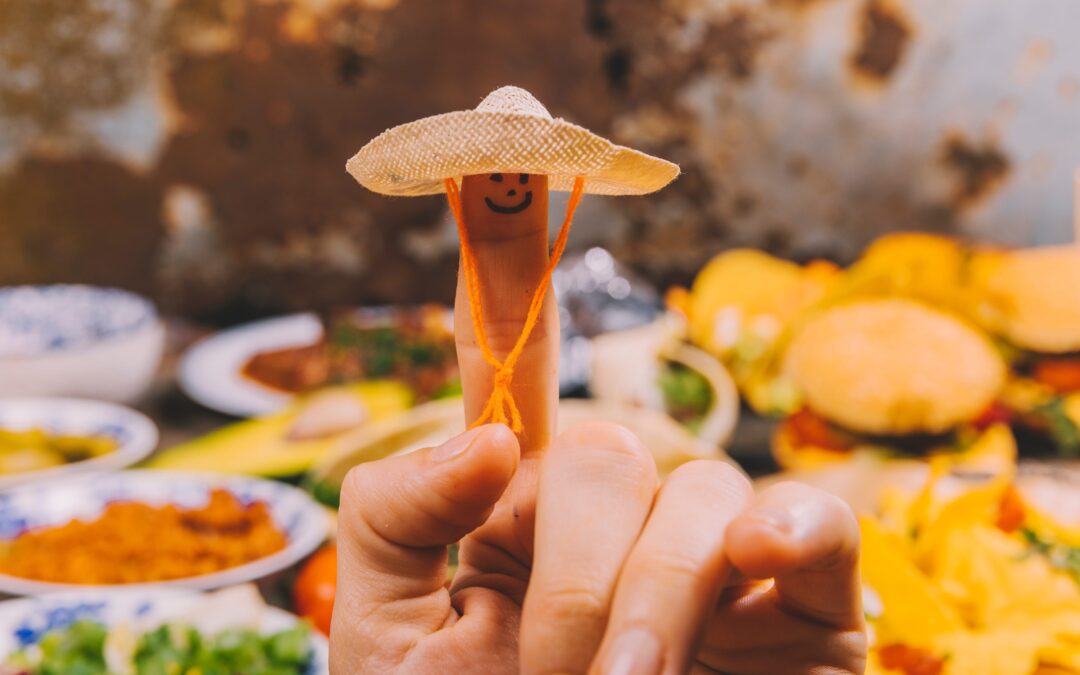
by lspeed | Oct 5, 2025 | RESTAURANT BUSINESS: BEHIND THE KITCHEN DOOR
During last year’s family holiday in Austria, I took my family to a nearby “South American Steakhouse”. It’s always helpful to see what “the other guys” are doing – and how. The decor looked authentic, menu and steak cut descriptions ticked the right boxes, and the Google reviews were solid.
The owner greeted us with a smile and a “Bienvenido”, seated us, and since I detected some sort of accent I asked him if he was South American. And this is where the experience fell apart. Instead of being upfront that he was Turkish (which he was), he started mumbling something about his mother being Spanish, but he himself having grown up in Austria. It was contrived and fake.
As restaurateurs, we of all people understand best that restaurant fads keep changing and evolving. We are always looking for niches yet unoccupied by competitors. The results can be magic if done right, or disastrous when they miss the mark.
What are the lessons here?
The End of Pretend
Modern diners travel widely, scroll endlessly, and know the difference between genuine craft and clever packaging. A restaurant that leans heavily on gimmicks or Instagram flash will get attention, but won’t build loyalty. Guests can spot staged stories and they walk away when they feel oversold to. Often, the difference is minor and unexpected, but one thing stands out. Restaurants that anchor themselves in authenticity – or at least honesty – build resilience and credibility.
Food With a Story
Authenticity begins in the kitchen. This isn’t about copying tradition for its own sake, it’s about clarity. An Izakaya should taste like Japan, not like a Pinterest mash-up. A steakhouse like our wins respect by buying the best meat they can, and then honouring it instead of dressing it in needless frills. Chefs who can explain why a dish matters, whether it’s a family recipe, a local farm partnership, or a heritage ingredient, serve more than food. They serve meaning and that is what diners remember.
Service Without the Script
It doesn’t end with the plate. A restaurant’s voice is also in the way staff smile, speak and move. Diners can tell the difference between a rehearsed greeting and a genuine welcome. The same goes for design: better to embrace a space’s own history and community than paste over it with trends. When a restaurant feels lived-in, when staff sound like themselves, when culture is celebrated rather than manufactured, that’s when the atmosphere sticks.
The Branding Trap
Too many restaurants curate a perfect online persona that falls apart in reality. Social media loves a façade, but guests won’t return for a façade. They’ll return for honesty. Branding should flow from the restaurant’s truth, not invent or fake it. A slightly imperfect but authentic experience is always more powerful than something polished yet hollow.
Authenticity Pays
Being real isn’t just good for reputation, it’s good business. Loyal guests come back without being lured by discounts. Staff stick around when they feel part of something genuine, not just another concept rollout. Word of mouth thrives on authenticity because it carries the weight of trust.
Trends come and go. New cuisines rise, presentation styles shift, and technology keeps changing how people discover and remember restaurants.
So get real – don’t just invent the next big thing. Be the thing.
Image Credit: https://freepik.com
_ _ _
© CHURRASCO PHUKET STEAKHOUSE / ALL RIGHTS RESERVED
Reprinting, reposting & sharing allowed, in exchange for a backlink and credits
Churrasco Phuket Steakhouse serves affordable Wagyu and Black Angus steaks and burgers. We are open daily from 12noon to 11pm at Jungceylon Shopping Center in Patong / Phuket.
We are family-friendly and offer free parking and Wi-Fi for guests. See our menus, reserve your table, find our location, and check all guest reviews here:
https://ChurrascoPhuket.com/
#Churrascophuket #jungceylon #phuketsteakhouse #affordablewagyu #wagyu

by lspeed | Sep 21, 2025 | RESTAURANT BUSINESS: BEHIND THE KITCHEN DOOR
Used wisely, restaurant surveillance and monitoring systems enhance safety, improve operations, and protect investments. Misused or over-relied upon, they risk creating an atmosphere of fear and resentment, driving away both staff and customers. While surveillance brings undeniable advantages, it also brings up limitations, legal risks, and unintended consequences.
The Benefits
At its best, surveillance helps protect a restaurant’s most critical assets – its people, its property, and its brand reputation. Security cameras can deter theft, both internal and external. In such an environments where cash handling is frequent, the mere presence of visible cameras often discourages employee misconduct and can resolve disputes over missing money or stock. From an operational standpoint, surveillance footage can be a valuable training tool. Reviewing real-life interactions allows management to spot service gaps, inefficiencies, or safety hazards that might otherwise go unnoticed. It can even assist in defending against fraudulent liability claims, such as slip-and-fall cases, which can carry significant financial risk. Surveillance offers peace of mind. For owners and managers who cannot be on-site 24/7, remote camera access via smartphones provides a way to stay connected and keep an eye on the business in real-time.
Ethics & Legality
However, surveillance isn’t simply a matter of installing cameras and hitting record. There are strict legal frameworks that vary by jurisdiction, and failing to comply can result in heavy penalties. First, most regions require that any video or audio recording be disclosed to those being monitored. Hidden cameras in dining rooms or restrooms are almost universally illegal. Even in employee-only areas, such as kitchens or stockrooms, regulations typically mandate clear signage informing staff they are under surveillance.
Audio recording presents even more legal complexity. In many places, recording conversations without the consent of all parties is against the law. This makes capturing customer or staff conversations a risky proposition unless explicit consent has been obtained. Beyond the legal issues, there are ethical ones. Too much surveillance can create a culture of mistrust. Staff members who feel constantly watched may experience lower job satisfaction, increased stress, and higher turnover, problems that hurt morale and customer experience.
The Alternatives
If traditional surveillance feels too intrusive or heavy-handed, there are alternative methods to improve oversight without undermining trust. One option is to focus on building a strong workplace culture where accountability is part of the DNA. Clear protocols, open communication, and regular performance reviews often achieve better long-term results than monitoring alone.
Mystery shoppers offer an alternative, human-centric way to assess service quality without constant recording. Regular team meetings and anonymous staff feedback channels also allow issues to surface organically. Technology plays a supporting role without heavy surveillance. POS system audits, inventory management software, and timekeeping tools flag discrepancies or inefficiencies without resorting to round-the-clock monitoring.
The Limits
Even the most sophisticated surveillance system cannot replace good management. Cameras can catch someone making a mistake or breaking the rules, but they do not prevent mistakes from happening in the first place. They cannot fix deep-rooted cultural problems, nor can they coach employees on delivering a memorable guest experience.
More importantly, surveillance is reactive by nature. It can show you what happened after the fact, but it rarely provides the insight needed to proactively inspire better performance. The goal of any restaurant surveillance system should be support, not control.
Image Credit: https://freepik.com
_ _ _
© CHURRASCO PHUKET STEAKHOUSE / ALL RIGHTS RESERVED
Reprinting, reposting & sharing allowed, in exchange for a backlink and credits
Churrasco Phuket Steakhouse serves affordable Wagyu and Black Angus steaks and burgers. We are open daily from 12noon to 11pm at Jungceylon Shopping Center in Patong / Phuket.
We are family-friendly and offer free parking and Wi-Fi for guests. See our menus, reserve your table, find our location, and check all guest reviews here:
https://ChurrascoPhuket.com/
#Churrascophuket #jungceylon #phuketsteakhouse #affordablewagyu #wagyu
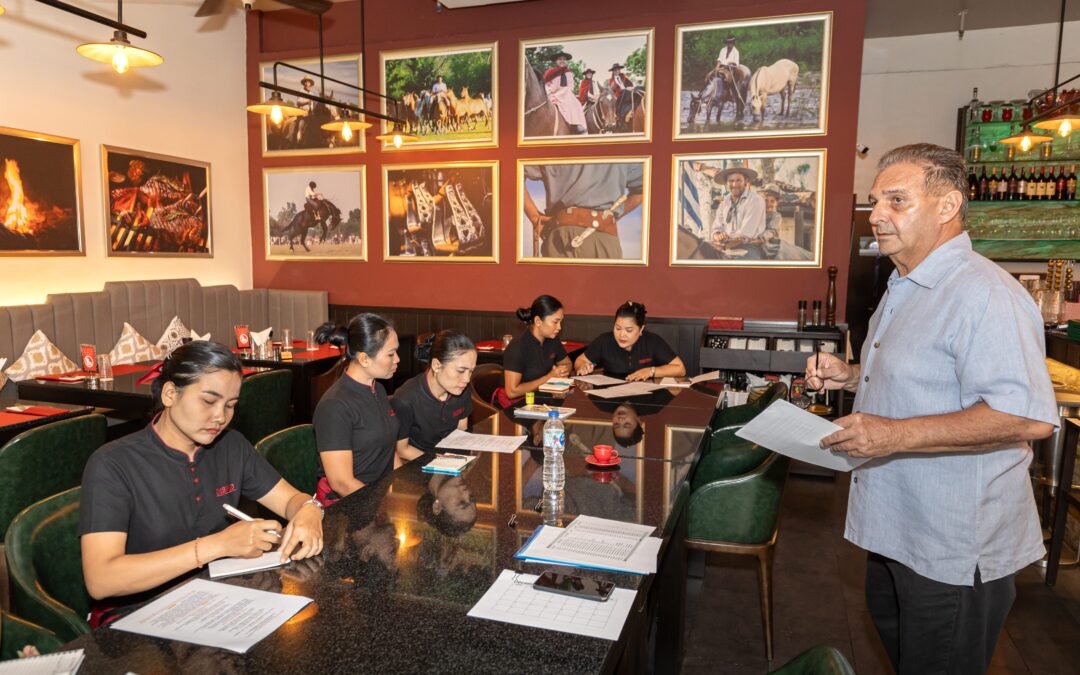
by lspeed | Sep 7, 2025 | RESTAURANT BUSINESS: BEHIND THE KITCHEN DOOR
Restaurant life is fast, often furious. Orders fly in, staff rotate through shifts, customers expect seamless service. It’s a demanding environment, and without consistent communication, even the best teams lose focus. That’s where regular team meetings come in. They’re not about adding bureaucracy; they’re about building alignment, trust, and accountability. Handled well, meetings can strengthen operations and culture. Handled poorly or skipped entirely, they become a missed opportunity or worse, a point of frustration.
Why They Matter
-
Clear Communication
Important updates—like menu changes, allergy alerts, equipment issues, or VIP bookings—need to be communicated clearly and consistently. Relying on shift notes, scattered messages, or word of mouth often leads to confusion. Meetings give everyone the same information at the same time, reducing errors and miscommunication.
-
Team Culture
A regular meeting rhythm fosters team identity. It creates space to acknowledge good performance, share feedback, and build mutual respect. When staff feel included and informed, they’re more likely to buy in—and less likely to burn out or walk away.
-
Reinforcement of Standards
Meetings allow managers to revisit service expectations, health and safety procedures, and brand values in a structured way. Reinforcement is especially useful in environments with high staff turnover or seasonal hires.
-
Feedback and Improvement
The kitchen, floor, and bar staff often have insights that management misses. Meetings provide an opportunity to hear what’s working—and what isn’t. Encouraging open dialogue leads to smarter, faster problem-solving.
Common Pitfalls
-
Bad Timing
Getting everyone in one room can be a challenge. Split shifts, peak prep hours, and deliveries don’t leave much downtime. Scheduling must be realistic—meetings that cut into rest days or cause staff to clock extra hours without purpose can quickly breed resentment.
-
Poor Structure
Meetings that run too long, lack focus, or don’t address day-to-day concerns lose credibility. If staff feel the meeting isn’t relevant to their role or adds no value, they’ll disengage. A vague, one-sided meeting does more harm than good.
-
No Follow-Through
Nothing undermines a meeting more than repeated issues with no action. If feedback is collected, but not acted on—or if promises are made and forgotten—staff will stop contributing. Meetings must result in clear actions and accountability.
How Often?
The ideal frequency depends on the size and nature of the business:
-
Weekly (15–30 minutes): Best for fast-paced restaurants with frequent changes. A short standing meeting early in the week helps set priorities and reinforce focus.
-
Biweekly (30–45 minutes): Works well for mid-size teams or steady operations. Allows time for team input, operational updates, and light training without overloading schedules.
-
Monthly (45–60 minutes): Useful for deep dives—financial performance, staff development, guest feedback trends, or seasonal planning.
-
Daily Pre-Shift Briefs (5–10 minutes): These quick huddles are essential in any operation. They cover the day’s reservations, specials, staffing adjustments, and service notes.
How To Make It Productive
An effective agenda doesn’t need to be complicated. A basic structure helps keep the meeting on track:
-
Welcome and Recognition (3–5 minutes)
-
Operational Updates (10–15 minutes)
-
Menu changes, stopped items, stock concerns, event reminders, service flow adjustments.
-
Training or Focus Topic (5–10 minutes)
-
One skill, standard, or issue to highlight—e.g., how to handle complaints, plating consistency, up-selling techniques.
-
Team Feedback and Questions (5–10 minutes)
-
Next Steps and Closing (3–5 minutes)
Image Credit: https://churrascophuket.com
_ _ _
© CHURRASCO PHUKET STEAKHOUSE / ALL RIGHTS RESERVED
Reprinting, reposting & sharing allowed, in exchange for a backlink and credits
Churrasco Phuket Steakhouse serves affordable Wagyu and Black Angus steaks and burgers. We are open daily from 12noon to 11pm at Jungceylon Shopping Center in Patong / Phuket.
We are family-friendly and offer free parking and Wi-Fi for guests. See our menus, reserve your table, find our location, and check all guest reviews here:
https://ChurrascoPhuket.com/
#Churrascophuket #jungceylon #phuketsteakhouse #affordablewagyu #wagyu
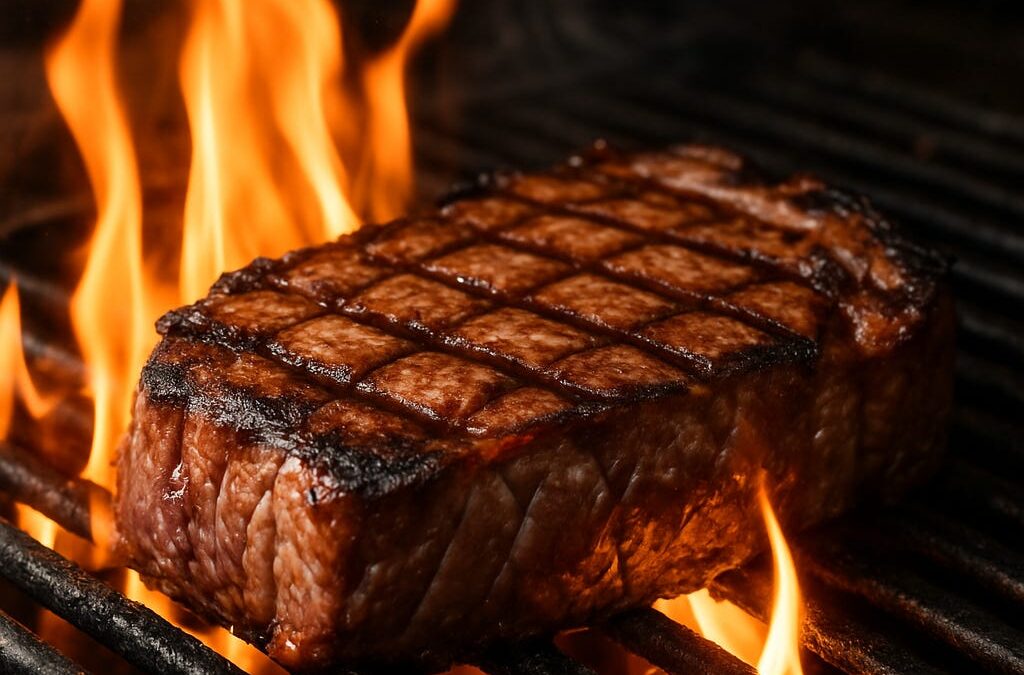
by lspeed | Aug 24, 2025 | RESTAURANT BUSINESS: BEHIND THE KITCHEN DOOR
Operating a steakhouse is a high-stakes restaurant balancing act, blending precision cooking, high product costs, and elevated guest expectations under high-pressure conditions. While every restaurant faces staffing, inventory, and economic variables, steakhouses in particular deal with a unique breed of guest demands and operational headaches that require both diplomacy and technical discipline. Here are three challenges steakhouse operators routinely face from guests believing they know all about barbeque, starting with one that shows just how misunderstood steak preparation still is.
1. “Bleu with a Tan”: The Impossible Steak Order
One of the more confounding requests a steakhouse receives comes up more often than many would expect. Guests asking for a steak cooked bleu (very rare, cold in the center), but with “a nice sear” or “a little tan on the outside.” From a culinary standpoint, this is an oxymoron. Proper searing requires time over high heat, and time over high heat raises internal temperature. A steak can’t simultaneously be cold in the center and have a significant exterior crust without using unconventional techniques or risking food safety.
Yet operators can’t afford to alienate guests, even those with technically unachievable preferences. This puts front-of-house teams in a delicate position. Training is essential, not only in the kitchen but also for service staff, who must learn how to gently educate diners on cooking levels and kitchen limitations, without making the guest feel wrong or embarrassed. Often, it becomes a negotiation: “Would you prefer rare with a deep sear instead?” Or, “Would you like to see how we normally prepare bleu and decide if that works for you?”
While the request may be unreasonable, the guest rarely is. More often, it’s a communication gap but one that can be bridged with professionalism and patience. We at Churrasco Phuket Steakhouse do not offer “bleu”, only rare. We learned the hard way how much very expensive product can be destroyed by an unreasonable guest sending the steak back not once, but several times.
2. The “I Know Beef” Guest: When Knowledge Gets Weaponized
In the age of food influencers, viral steak videos, and self-proclaimed connoisseurs, steakhouses increasingly face guests who believe they know beef better than the professionals preparing it. Some arrive with notions that contradict culinary science or the realities of the supply chain: demands for Australian “Kobe,” complaints that dry-aged beef should taste like Roquefort, or insistence that USDA Prime must be A5 Wagyu in disguise.
The operational challenge here lies in managing expectations while defending the integrity of your menu and your team. Misinformation can quickly turn into confrontation, especially when a guest feels they’ve been “misled.” The solution lies in proactive communication. Menus should clearly label breed, origin, and grading systems. Service staff must be equipped with knowledge about sourcing, marbling scales, and preparation methods. When handled correctly, these moments can actually strengthen guest confidence. But when mishandled, they erode trust and damage staff morale.
Steakhouses like us are constantly investing in staff education and pre-service briefings, ensuring that all team members can field technical questions with confidence and clarity. It is an ongoing and systematic task.
3. Consistency Over Fire: The Eternal Flame War
No operational challenge is as relentless or as visible as maintaining consistent steak cooking levels across multiple cuts, sizes, and temperatures, especially during peak hours. Cooking a medium rare filet and a medium well skirt steak at the same time, while juggling additional orders, is not just difficult. It’s the ultimate test of kitchen discipline. Grill Chefs must manage heat zones, resting times, and internal temperature targets with absolute precision. Inconsistency results in returned plates, comped meals, and reputational damage. Yet during rush periods, all it takes is a 15-second distraction or an unfamiliar steak thickness to throw off timing. To mitigate this, top operators assign only experienced staff to the grill station, monitor ticket flow in real time, and limit the number of variables per shift. Some use laser thermometers or sous vide systems for baseline control, but in most traditional steakhouse settings, it still comes down to muscle memory and instinct. These are qualities that take years to develop.
Steakhouse products are primal, but their execution must be sophisticated. That’s the great paradox of steakhouse operations, requiring strategic communication, guest management, and systems that allow for flexibility without compromising quality. Whether it’s navigating an impossible cooking level request, tactfully addressing misinformation, or maintaining consistency during a slammed dinner service, operators must remain vigilant and calm under fire.
Image Credit: https://churrascophuket.com
_ _ _
© CHURRASCO PHUKET STEAKHOUSE / ALL RIGHTS RESERVED
Reprinting, reposting & sharing allowed, in exchange for a backlink and credits
Churrasco Phuket Steakhouse serves affordable Wagyu and Black Angus steaks and burgers. We are open daily from 12noon to 11pm at Jungceylon Shopping Center in Patong / Phuket.
We are family-friendly and offer free parking and Wi-Fi for guests. See our menus, reserve your table, find our location, and check all guest reviews here:
https://ChurrascoPhuket.com/
#Churrascophuket #jungceylon #phuketsteakhouse #affordablewagyu #wagyu

by Ross Kingsley | Aug 10, 2025 | RESTAURANT BUSINESS: BEHIND THE KITCHEN DOOR
Upselling is an essential skill in the restaurant industry. When executed thoughtfully, it enhances the dining experience for guests while boosting revenue for the establishment. Here are four techniques that every restaurant can implement:
Personal Recommendations
Guests value suggestions that feel tailored to their preferences. Servers can recommend premium items, such as the chef’s special or an upgraded version of a dish. For example, instead of suggesting a standard cocktail, they might propose a craft version with top-shelf spirits. Personalized phrasing works wonders, such as, “If you’re in the mood for seafood, our pan-seared scallops are exceptional—they’ve been a hit tonight.” The goal is to make guests feel like they’re receiving insider tips rather than a sales pitch.
Highlighting Add-Ons
Small additions can significantly enhance both the meal and the check total. Servers can recommend add-ons like a side of truffle fries with a burger or a drizzle of premium olive oil over a salad. The way these suggestions are phrased is critical. Instead of a plain, “Would you like bacon on that?” try, “A crispy bacon topping takes this burger to the next level—it’s a favorite with our regulars.” Such thoughtful suggestions feel like enhancements rather than upsells.
Suggesting Desserts
Desserts are an often-overlooked opportunity to upsell, but a little nudge can make a difference. Rather than asking, “Do you want dessert?” servers can paint a picture: “We have a rich tiramisu today, made fresh this morning. It’s light but indulgent and pairs beautifully with our espresso.” Guests are more likely to indulge when the experience is framed as a perfect ending to their meal.
Train Staff to Identify Opportunities
Not every upsell works for every guest, which is why training staff to read the room is essential. Families might appreciate meal bundles or kid-friendly options, while couples on a date might lean toward specialty cocktails or shared plates. Servers should learn to observe cues—like a guest’s interest in the wine menu or their response to a recommendation—and tailor their approach accordingly. Empowering staff with the right skills ensures upselling feels natural and guest-focused.
When applied tactfully, these upselling strategies not only increase revenue but also leave guests feeling valued and satisfied. It’s about delivering an elevated dining experience, one thoughtful suggestion at a time.
Image Credit: https://www.freepik.com
_ _ _
© CHURRASCO PHUKET STEAKHOUSE / ALL RIGHTS RESERVED
Churrasco Phuket Steakhouse serves affordable Wagyu and Black Angus steaks and burgers. We are open daily from 12noon to 11pm at Jungceylon Shopping Center in Patong / Phuket.
We are family-friendly and offer free parking and Wi-Fi for guests. See our menus, reserve your table, find our location, and check all reviews here:
https://ChurrascoPhuket.com/
#Churrascophuket #jungceylon #phuketsteakhouse #affordablewagyu #wagyu


